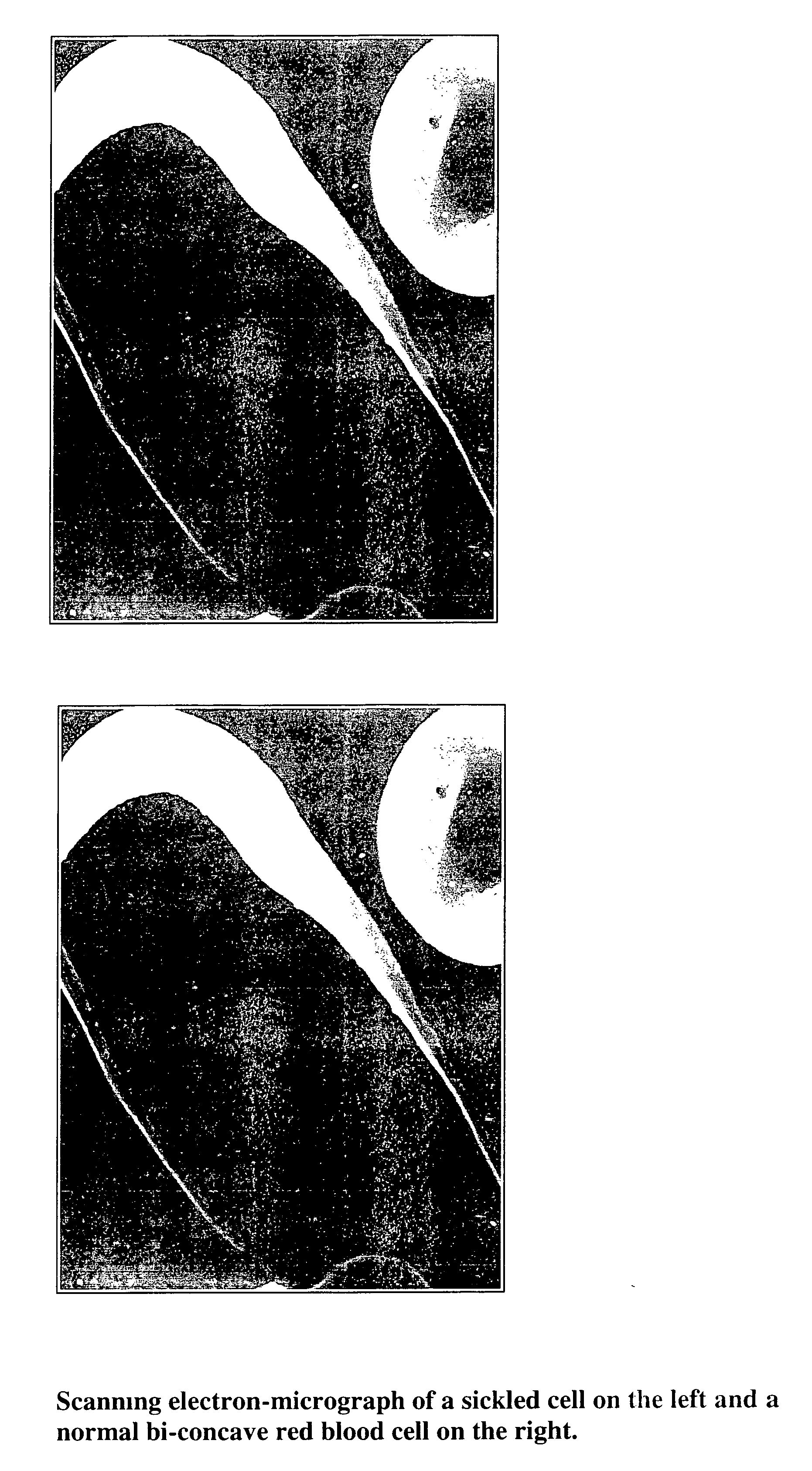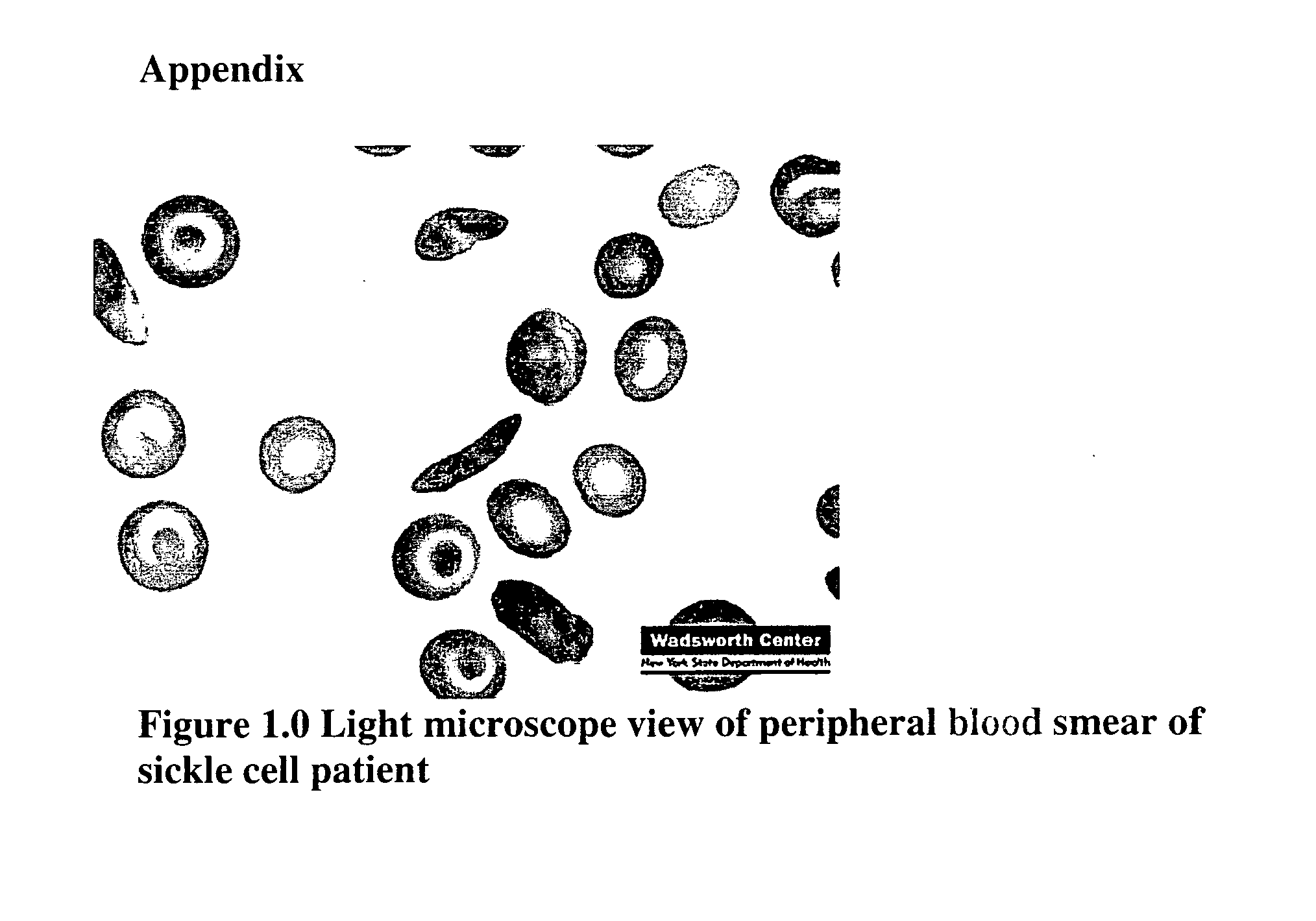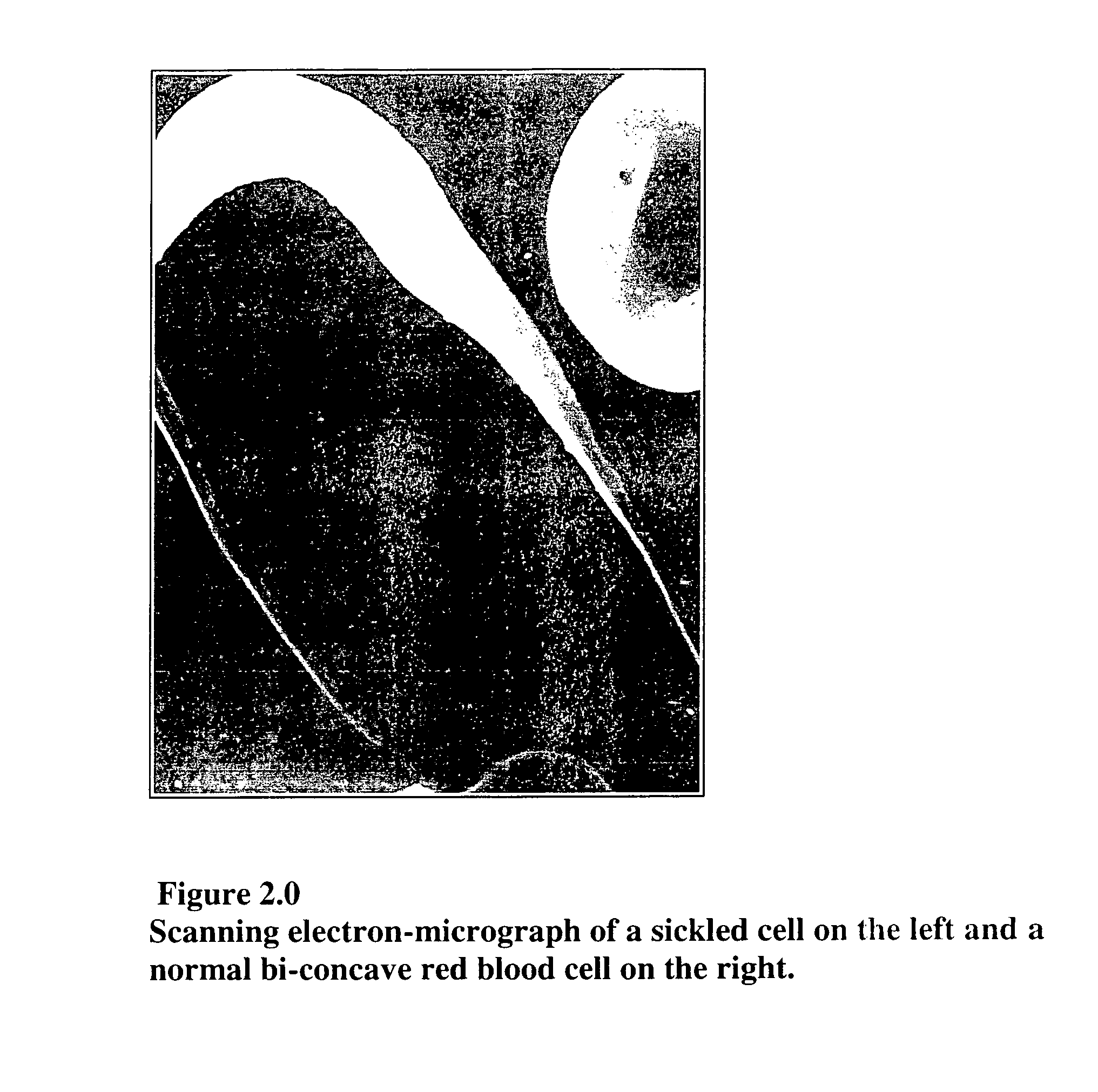Use of stem cells to cure genetic diseases in humans cure for sickle cell anemia
a technology of stem cells and genetic diseases, applied in the field of stem cells to cure genetic diseases in humans cure for sickle cell anemia, can solve the problems of gvhd and hvgd problems, hvgd, hbgss replacement with varying amounts of hbgaa or hbgf, and still remained the problem of gvhd and hvgd, and achieve the effect of diagnosing sickle cell anemia
- Summary
- Abstract
- Description
- Claims
- Application Information
AI Technical Summary
Benefits of technology
Problems solved by technology
Method used
Image
Examples
Embodiment Construction
[0041]In 1956 the inventor sought out to cure sickle cell anemia when it was not heard of in the medical community. The discovery came when viewing a blood cell developmental chart. This was 1970s. When these cells (Stem cells) were found to take on the characteristics of the environment, it was the inventor's ideas that this might help with the GvHD of 1970. Later the inventor realized he had stumbled upon a way to replace all the tiny blood cells in the body. Much research had to happen that the inventor was not allowed to take part in. In the 1980s stem cells were being transplanted into humans and it was met with some success. Although the GvHD and HvGD still proved to be problematic. One of the problems was whether the hemoglobin F gene was being activated from without the cell by a factor since control of Hbg F synthesis could help the condition of Sickle cell. It was found that that there is a factor that regulates the switching of fetal and beta hemoglobin. This factor is a ...
PUM
| Property | Measurement | Unit |
|---|---|---|
| flat surface area | aaaaa | aaaaa |
| adhesion | aaaaa | aaaaa |
| S-phase | aaaaa | aaaaa |
Abstract
Description
Claims
Application Information
 Login to View More
Login to View More - R&D
- Intellectual Property
- Life Sciences
- Materials
- Tech Scout
- Unparalleled Data Quality
- Higher Quality Content
- 60% Fewer Hallucinations
Browse by: Latest US Patents, China's latest patents, Technical Efficacy Thesaurus, Application Domain, Technology Topic, Popular Technical Reports.
© 2025 PatSnap. All rights reserved.Legal|Privacy policy|Modern Slavery Act Transparency Statement|Sitemap|About US| Contact US: help@patsnap.com



